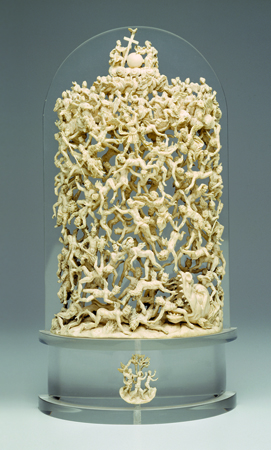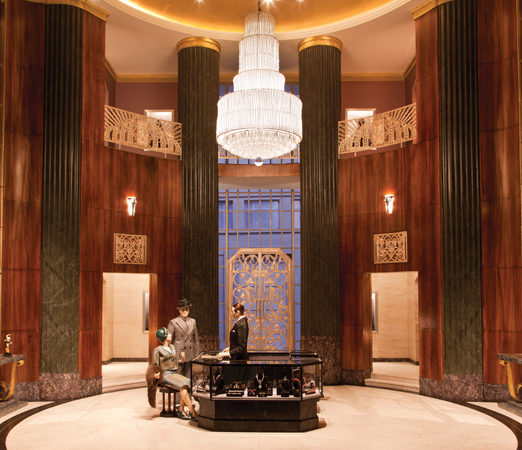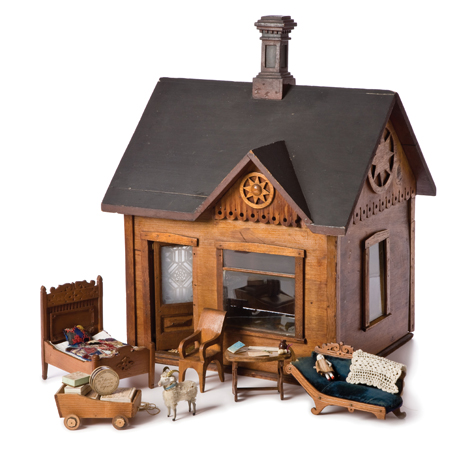Kara Petrovic // Fall 2014
Museum employees spend their working hours surrounded ceiling to floor and the spaces in between by decorative objects and art. They have the opportunity to really study the finest details and learn the stories behind the pieces, to intimately know them like not many others are privileged to. Because UMKC alumni study many collections and work at distinguished museums across the country, we asked them to talk about their very favorites — the best of the best — and why these works are worth more than just a shout out.

Christine Droll
B.A. ’76
Collections database administrator
Nelson-Atkins Museum of Art
Kansas City, Mo.
FALL OF THE REBEL ANGELS
Description: The early 18th-century sculpture by an unknown Italian artist is an intricate carving in ivory that shows a steadiness of hand, a keenness of observation and an abundance of imagination.
Why it inspires me: What draws me to this object is the artist’s mastery of the medium. The anguish on the faces of the rebel angels, with their writhing and twisted bodies, is conveyed most frighteningly. Yet who needs the threat of hell when there’s so much pain and misery on earth? That the expression of this fear can be so exquisitely rendered in an object that is then collected and housed in an art museum surely must say something about the dignity and splendor that are also part of humanity.

Laura S. Taylor
M.A. ’14
Museum educator
National Museum of Toys and Miniatures
Kansas City, Mo.
ART DECO JEWELRY STORE, 2013
Description: This miniature is based on the Cincinnati Netherland Plaza Hotel, the ocean liner Normandie and Neiman Marcus in Chicago. The store is in 1/12 scale and features six types of faux painted marble, rosewood walls and a gilded ceiling. There are 15,800 beads in the intricate chandelier.
Why it inspires me: I love that artists working separately in three countries produced a work of art that is so wholly integrated. Even the subtlest details are cohesive. For instance, the architectural artists chose twilight as the setting to maximize the sparkle of the jewels. The figural artist added a faint five o’clock shadow to the gentlemen’s cheeks, an understated detail that reinforces the reality of the vignette.

Jamie Berry
M.B.A. ’11
Executive director
National Museum of Toys and Miniatures
Kansas City, Mo.
NETTIE WELLS DOLLHOUSE, c. 1880s
Description: Nettie Wells was a local Kansas City girl of modest means. Despite its relatively small size, her dollhouse has a very big and meaningful story. The doll, furniture and contextual materials that are part of the house help us explore how Nettie played.
Why it inspires me: Because the museum staff has been able to speak directly with Nettie’s daughter, we’ve gathered rich historical information about Nettie, her family and the dollhouse. It was a family project, built and furnished for Nettie by her father. Nettie practiced her sewing skills with her mother as they made bedding and clothing for Gracie, the doll that lived in the house. It’s clear the project was infused with a great deal of love.
»Big changes are taking place
The National Museum of Toys and Miniatures, formerly the Toy and Miniature Museum, is currently under construction for renovation, but doors are set to reopen in spring 2015.
